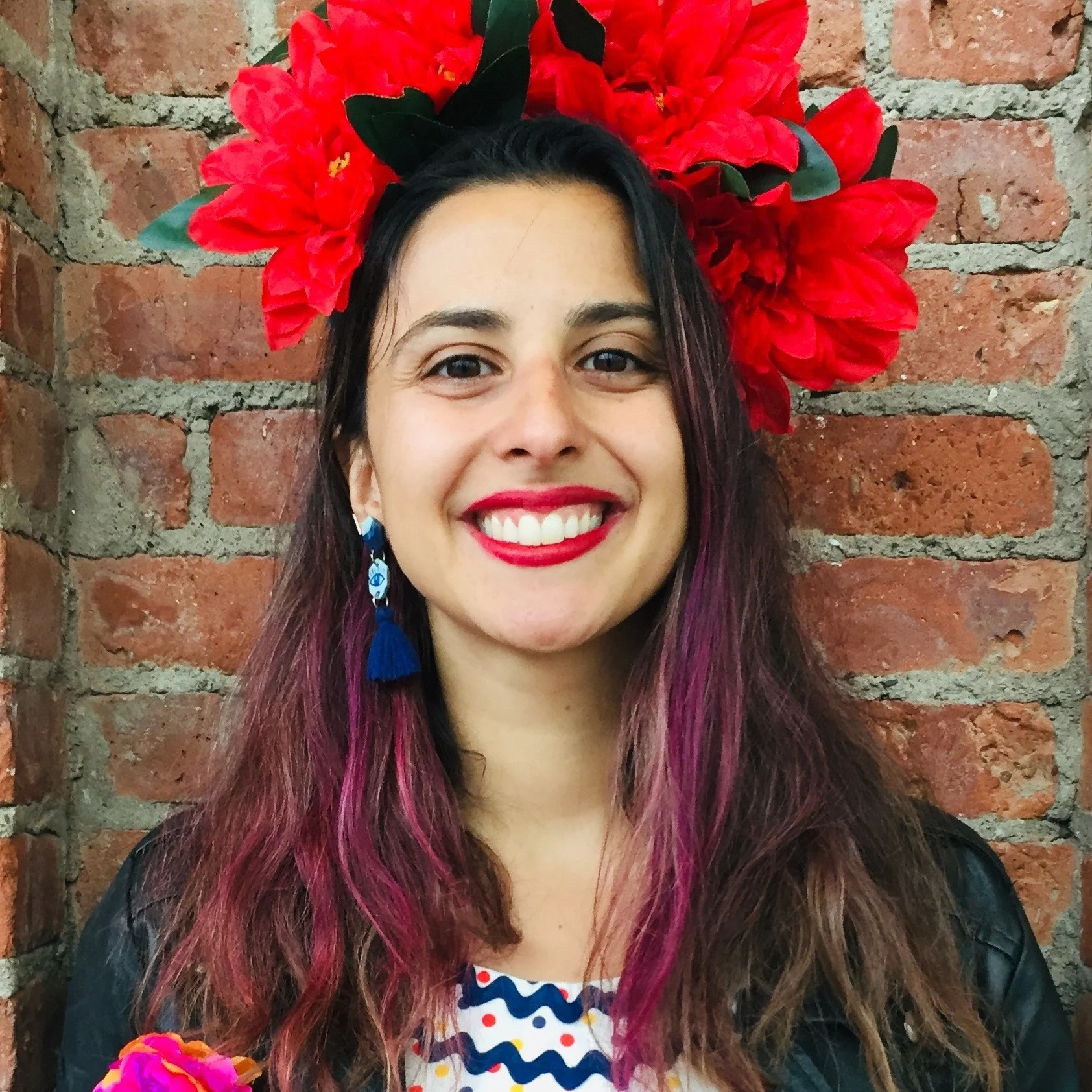Undiagnosed dyslexia and low self-esteem: Becoming a fashion designer
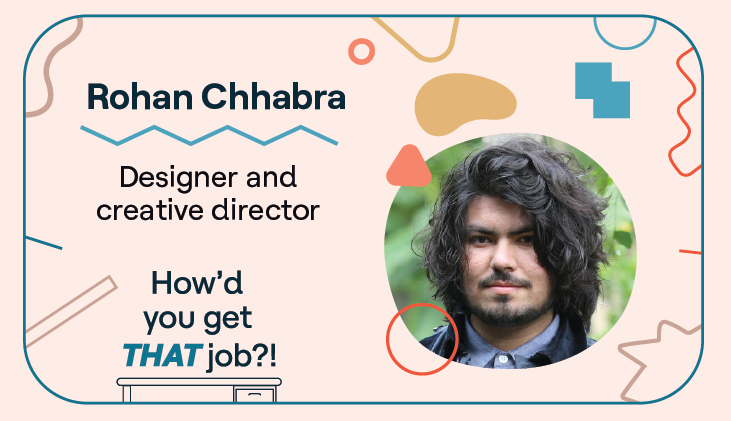
Stay in the know
All our latest podcasts delivered right to your inbox.
Rohan Chhabra found out he had dyslexia during graduate school by tagging along with a friend to her evaluation. He went in knowing nothing about dyslexia — and came out with a diagnosis. After learning more about it, so many things about how his brain worked finally made sense. Dyslexia had been guiding his life and his career choices, and he hadn’t even realized it.
Growing up in India, Rohan was a quiet kid who worried about keeping up with academic classes. He gravitated toward creative fields that relied on drawing instead of writing. After getting his master’s degree in industrial design, Rohan worked for fashion titans like Nike and Ralph Lauren. But his passion for animals and the environment pulled him in another direction. Now, he creates digital fashion sold as NFTs.
Related resources
Episode transcript
Rohan: So we went ahead with the tests and then came out and were like, "Oh, you're dyslexic. Do you you — were you ever diagnosed with this?" And I was like, "No, I have no idea what it even means." And so then I went home, researched more about it, and everything started falling into place. Like why things felt the way they felt.
Eleni: From the Understood Podcast Network, this is "How'd You Get THAT Job?!," a podcast that explores the unique and often unexpected career paths of people with learning and thinking differences. My name is Eleni Matheou and I'm a user researcher here at Understood. That means I spend a lot of time thinking about how we find jobs we love that reflect how we learn and who we are. I'll be your host.
School settings often aren't tailor-made for people with learning and thinking differences. My guest, Rohan Chhabra, often felt insecure in school in India. It wasn't until he was in graduate school for industrial design that he learned that he had dyslexia. That diagnosis unlocked resources that helped him succeed at his master's and launch a career in design. He's worked for brands like Ralph Lauren and Nike and is now working in the realm of digital fashion that is sold as NFTs. We'll get to that.
Rohan considers dyslexia a big piece of who he is as a creator. His work is also informed by his commitment to social issues like endangered animals and the environment. Rohan, welcome to the show.
Rohan: Hey, Eleni.
Eleni: So I know that you weren't diagnosed with dyslexia until you were in college, so I thought that might be a nice place to start. Could you tell me a little bit about how your late diagnosis came about?
Rohan: Yeah, it was interesting. I was, you know, this is back in London when I was doing my master's. It was just the beginning of my course. And I was hanging out with one of my classmates and she knew she was dyslexic. And I didn't even know what dyslexic means at that point. So she said, like, "Hey, you know what? Maybe I'm going for a test. Do you want to hang around? And then we can go get some drinks afterwards?" I was like, "Yeah, that sounds like a great plan." I was just excited by the drinks.
So then we go ahead and since I was at the center, they asked me like, "Hey, are you here for the test too?" So I was like, "Not really, but what is this test?" And they were like, "Oh, it's a dyslexia test. Like, do you want to, you know, partake in it?" My friend is like, "Yeah, do it. Like, What the hell?" The exciting part for me was that it was going to be a few extra days for submissions if you're dyslexic, right? And you get a free computer and you get like a voice recorder and a few other freebies. So I was like, "OK, that sounds amazing. I don't know what this is, but let me try."
Eleni: You're in it for the perks.
Rohan: Yeah. So I went ahead with the test and they came out and were like, "Oh, you're dyslexic. Were you ever diagnosed with this?" And I was like, "No, I have no idea what it even means." And so then I went home, researched more about it, and then realized, like my whole life I was kind of, you know, just — it kind of started — everything started falling into place. Like, why things felt the way they felt.
Eleni: Yeah. So it's so interesting because it sounds like you were just at the right place at the right time, and it was kind of completely random that that opportunity came about. Do you think that your friend had some sense that maybe you had dyslexia and she was kind of nudging you in the right direction?
Rohan: Kinda. I think she she kind of sensed it just because whenever I was in the classroom, I can never make notes because I can never write that fast, you know. Or, you know, follow too many instructions at one point. So I'm always like the guy who's asking after the class, "Hey, what happened? Like, what was that about, what was this about?" You know, trying to catch up? So she kind of sensed it, I think.
I feel much more confident now than I what I used to, just because, you know, growing up was, you know, with a lot of insecurities and with a lot of fear of, you know, not being smart enough.
Eleni: Yeah, and I know that you mentioned that a lot of things fell into place for you. And, you know, we often hear that a lot with people that get diagnosed later in life that they start to piece things together. So, do you have like any standout memories of things that make a lot more sense now that are related to your dyslexia that you've reflected upon?
Rohan: Definitely. I think what I realized as being dyslexic, I was always focusing more on the bigger picture, you know, because if I go too much in details, it used to like get me rounded out with too many intricacies. And what I always excelled in was the big-picture thinking — thinking out like out of the box, like thinking about the bigger concept. And that was a thing which always was kind of working for me, you know, like stepping out and looking at it from from the top rather than being from the point of view, you know?
Eleni: Yeah, definitely. And yeah, it's so important to be able to identify what your strengths are and really lean into that in your work. Before we get to that, I know that you mentioned feeling, like, really insecure and anxious as a child. And I'm curious, like, what kind of made a difference to you and how did you build that confidence? How did you get to that place?
Rohan: Actually, I didn't get to that place till I entered college. My whole childhood, it was kind of very traumatizing just because, first of all, I was growing up in small towns in India. And the education system wasn't very modern, so there was no really focus on the art outside of stuff, music or painting or whatever. So it was very academic centric.
And while growing up, you know, there was a lot of fear because the era I grew up in, which is surprising because I'm not that old. But there was an era where teachers were, you know, kind of not very nice. They would hit you and stuff like that. So I had a very timid personality growing up just because I was so insecure about what I can do. I always felt pretty dumb just because I was not able to cope up with everyone else until I entered college. And I was studying fashion design at that point. That was a space where I felt, you know, for the first time in my life, I felt like, oh, this feels comfortable. Like I felt like I could, you know, communicate my thoughts through sketches. I didn't have to rely on writing stuff or reading stuff. I had more time to articulate my thoughts, to put things together.
And I was never in a, you know, a test phase where, you know, I had to complete an exam in like two hours or something. I always had a little more time where I could plan and execute. So at that point — and I had a really great mentor who actually really encouraged me and actually got me out of my shell. And that's when I actually really flourished in terms of my personality and also in my work.
Eleni: Yeah. We hear that a lot, that mentors can have a really big influence. Like, in what way did that, you know, help you? What did you what did you learn from that mentor?
Rohan: I think it was a few things. One of the things was there is no bad idea. You just need to take it to the next level. So, you know, stuff like that where nobody was kind of basically shooting down ideas, but there was a really openness to how we ideate stuff and how creative we can get. I really felt like during my bachelor's when I was studying fashion, I really felt like there was a space where I could do pretty much anything I wanted to.
So part of me, growing up in India I actually wanted to study industrial design. There are only a very few colleges in India who actually do that course. So I ended up doing fashion, but part of me actually wanted to do more industrial design. So with my mentor, she kind of understood that. And she allowed me to kind of treat fashion in that way, which was really interesting for me. So I was not kind of designing for trends, but I was designing more for lifestyle, you know, more for functionality, more for storytelling, which was something I really enjoyed. So, you know, I had that open space even when I was doing my bachelor's.
One thing led to the other that I actually got a full scholarship to study at Central Saint Martins and pursue my master's in industrial design, which was my dream. So that's when I found out about dyslexia, when I was in London. And I really used it more like a superpower then, more than anything I was always so worried about. So because now that I understood that part of my brain works in that way, I was actually I was able to push it to another limit.
Eleni: I know that you mentioned that you got into your dream course. And I know last time we spoke, you also mentioned getting into your dream job after you graduated. Do you want to talk a little bit about that experience?
Rohan: So, you know, growing up in India, Nike is such a big brand that has such a big presence, you know, emotionally, and the way it kind of impacts culture. So even though I didn't have a Nike sneaker till I was in high school or college, I believe, I was obsessed with it. So I used to like, you know, sketch shoes day in, day out, like in my notebooks and everywhere I could draw. Like there were just sneakers everywhere. So that was kind of a dream growing up that I wanted to work at Nike and be a sneaker designer and do, you know, clothing, whatever. So after I graduated from Central Saint Martins, I was lucky. And I got a job at the European headquarters in Amsterdam to work as a product designer for Nike, which was really cool.
Eleni: I always get in trouble for saying "nike" in America. They're very funny about saying "Nike" in Australia. We just say "nike." But yeah. What kind of surprised you about working at Nike? You know, what kind of led to you moving on and doing something different?
Rohan: Yeah, I guess once I entered, you know, the beast. I call it the beast because you're — it's such a big mechanism, right? It's a big, big organization that's working and it's so many thousands of people inside. I very quickly realized that this is not what I wanted to do. And what I wanted to do was to save endangered wildlife. And so my childhood dream kind of shifted from designing sneakers to actually designing for saving wildlife. Because I realized that's something I was more passionate about than anything else. And it was a realization that happened over a period of time and through exposure.
So after two years of working in Nike, I quit and I started, you know, I moved back to India, to my parents' basement, and I started making these garments. So a lot of my jackets were an archetype of a hunting jacket. And these hunting jackets became into the hunted animal trophy. So the hunter becomes the hunted. So it was metaphorically talking about, you know, the garment being a second skin for one's personality. And you yourself didn't see yourself as a hunted, poached animal. Which kind of took me to another route in my career. And part of what I did was to inform people about the issue that how so many species are getting endangered and, you know, because of hunting, poaching, and habitat loss, etc.
It took me about a year to complete the project. And since then I did like a batch production, which means basically like five to six jackets of each animal. And I had chosen five of the keystone species like the tiger, the elephant, and the gorillas, and the rhino. You know, during my master's, I had a realization that the most important thing and the most important definition of good design is to embody ethics. And that kind of stuck with me for even till now. And I hope to do more for this cause going into the future in any different ways I can, in multiple different directions and applications.
Eleni: I know that you also ended up working at Ralph Lauren at some point. And, you know, he's considered a fairly iconic American designer. How has your experience living in different countries perhaps shaped how you showed up in that role?
Rohan: Ralph Lauren was interesting. It was kind of going more fashion and something that was slightly outside my realm, you know, because I was always focused on the art side of things or the functionality side of things or, you know, kind of more on the social commentary of stuff. And this was like a really commercial space, you know, where you're talking about a very iconic American brand creating a timeless design. So I had to like switch cogs in my brain about how I think about this thing.
And I think that's the thing about being a designer. Sometimes you have to maybe just, you know, how you react to a brief. Sometimes you have to switch around your your thought process. You know, the same thought process cannot work for everything. So, yeah, I had to, you know, focus more on being more commercial and, you know, kind of bringing a similar thought process into that world, which often had a lot of backlash because, you know, from my merchants and from from my planners. They would be like, oh, this, you know, this is too ambitious or like this is too crazy. I always like pushing, pushing everyone to the limit to see what can be done and what cannot be done.
So for me, it was like a super-interesting time because I learned a lot. I definitely learned a lot. Like how to actually make business sense of things, which was really important. Also to, you know, work with different people. And dyslexia was kind of always a thing that used to, you know, come in my way of like sometimes executing certain tasks. So I had to work with my team members to make them understand what this is and you know, how my brain works and how maybe we can work together to make this work. I had to kind of figure out, you know, that I was a guy who was definitely not making any notes because in a meeting, because nobody would understand my notes. The team was super, super helpful and supportive in letting me kind of function in that way.
Eleni: Again, it's like really important to acknowledge, like, you know, where you need support and where your strengths are and where where you need a little bit of extra help. And that's OK.
I know that you're still designing, not necessarily like physical clothing. Do you want to talk a little bit about what you're designing now and, you know, maybe explain it in the most simple way, like pretend I'm 5?
Rohan: Yeah, absolutely. So what happened is that, you know, I've been in the fashion industry for so long now and — or you can see it like the whole textile industry. And what I realize is that the fashion industry is actually really bad for the environment, right? Because of the amount of waste we create, the amount of water we use, the amount of land we encroach from natural habitat for growing cotton or growing whatever. And it's just a very, very harmful industry for the planet. Ethics was always a big part of my life growing up and for me, as personally as a creator. And this was not falling into place.
And so I was definitely looking for different outlets to be creative. And for a very long time I kept searching and I had few answers. One was that I do not produce so much stuff, right, and I do something on my own, which is kind of creating more like art objects, right? The other option was blockchain technology. So when I got to know more about blockchain technology, which is which is a mind-blowing technology, because it's basically you can you can track everything who creates an asset to where it goes. You can actually see the chain of transaction. So it's basically like an open ledger, right? Which is really interesting because it changes everything. It basically decentralizes the whole system, how creative work, how artists work, and who gets the credit for what, right?
So for the first time, you can actually create something digitally and still own that piece of artwork and be able to sell it further. But unlike how art galleries used to do it — they used to buy it at a cheaper price from you and then sell it at a fortune rate and you would not get any of the returns. But what happens if it's an NFT, you actually get royalty for every seal that happens onward. So as a creative, you're still getting paid. I got into it because of the sustainability part of it, just because I felt like I was able to do something really crazy and creative but not have that big a carbon footprint.
So I got more into it. And now I work with a company called Space Runners. And Space Runners is a fashion metaverse brand. And what that means is that we have created a metaverse, a virtual space. You can just log in from the website or from the app, and you'll have a digital avatar of your own self. And you can select whatever you want to be — male, female, robot, creature, anything you want to be, right? And what you can do is in that space, you can, of course, try clothing like digital clothing for your avatar. You can purchase them, you can upgrade them, you can sell them, you can make money out of them. You know, it's a space where you can interact with your friends. So now what we're trying to create is digital fashion for a digital space for your digital avatar.
Eleni: Given that you've mentioned like the environmental impact a couple times, I feel like I have to ask how you feel about the environmental impact of crypto.
Rohan: Yeah, that's a big question that always comes around as as I talk about this. Yes, there are two ways, two ways to look at it, right? So the fashion industry has been trying to get sustainable for the last 20, 30 years, right? Or let's say 10 years more aggressively. And we haven't made much progress, right? It's a very slow progress to what we were all expecting. And, you know, with crypto and with blockchain, there's always been this question of like, yes, there has been, you know, a lot of electricity that is actually required to run these nodes, as they call it.
But, you know, already, if you see there has been a lot of advancement done in it already, where they're trying to fix it. So we have new kind of tokens, new kinds of coins or currencies, which actually are more sustainable, that take less energy to run, which are already like steps taken in in less than a year or two, you know. Compared to what fashion has done in the last 15 years. So at the rate at which we are going, even in terms of sustainability and technology advancement in the next five years, you know, only time will tell what happens. So let's see.
Eleni: Yeah, it's really interesting. Yeah. And thank you for sharing that perspective. I know, you know, this isn't the first time that you've worked with sneakers, obviously, at Nike and now at Space Runners. Do you want to talk a little bit about some of the similarities and differences between designing for a physical sneaker versus a digital one? And, you know, some of the things that you've learned from those experiences.
Rohan: Absolutely. I think that's been a good discovery, honestly, because when you actually design a physical sneaker, you are thinking about, of course, the design part of it, like how it looks esthetically. But you're also thinking about like, oh, is this a winter boot or is this a summer boot? Right? You're thinking about what kind of climate you're going to wear it and what kind of conditions you're going to have. Is it going to be raining? Is it going to be, you know, all these different functionality that you think about when you design a sneaker, right?
And and none of those factors exist in the metaverse. Like there's no climate, you know, so you do not have a problem to solve. And when you do not have a problem to solve, it kind of becomes more and more tricky for a designer. So yeah, so it is kind of interesting because we at Space Runners, what we do is we first think of what the problem is going to be, so we create our own problems.
So for example, in our new collection, it's kind of based around the idea of science fiction, right? So you're in space and you're in a different world, so you have different problems. For example, no gravity, for example. You know, you might need to fly around or you might need to levitate around just because there are different atmospheric conditions. So we take into those considerations and you call that, OK, those are interesting problems to solve.
And then as as designers, then we start resolving them by coming up with crazy solutions because we don't have to create them physically. So we can basically create anything that we think could be interesting fictionally too. So a lot of the products we design are actually references to science fiction. So a lot of the Space Runners sneakers you can actually fly and — or kind of levitate in the metaverse. And they kind of give you different utilities and different functionalities that real products in real life cannot give you.
Eleni: Well, thank you so much for sharing your story.
Rohan: And thank you for the opportunity.
Eleni: You've been listening to "How'd You Get THAT Job?!" from the Understood Podcast Network. This shows is for you. So we want to make sure you're getting what you need. Email us at thatjob@understood.org with your thoughts about the show. Or maybe you'd like to tell us how you got THAT job. I'd love to hear from you. If you want to learn more about the topics we covered today, check out the show notes for this episode. We include more resources, as well as links to anything we mentioned in the episode.
Understood.org is a resource dedicated to helping people who learn and think differently discover their potential and thrive. Learn more at understood.org/mission. "How'd You Get THAT Job?!" is produced by Grace Tatter. Briana Berry is our production director. Our theme music was written by Justin D. Wright, who also mixes the show. Margie DeSantis provides editorial support. For the Understood Podcast Network, Laura Key is our editorial director, Scott Cocchiere is our creative director, and Seth Melnick is our executive producer. And I'm your host, Eleni Matheou. Thanks again for listening.
Host
Eleni Matheou
leads user research for Understood. She helps Understood to center its work on the lived experiences and voices of people who learn and think differently.
Latest episodes
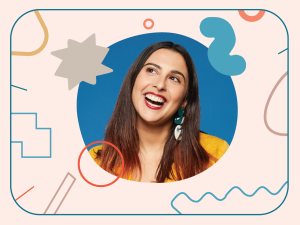
June 28, 2023
In the series finale of How’d You Get THAT Job?!, host Eleni Matheou unpacks what we’ve learned about how people thrive at work.

June 14, 2023
Nathan Friedman is the co-president and chief marketing officer of Understood.org. And he has dyslexia and ADHD. Learn how he got into the C-suite.
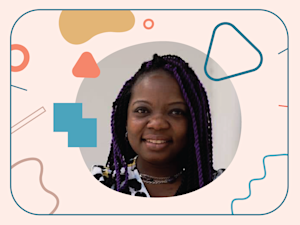
May 31, 2023
Dr. Loucresie Rupert is a child, adolescent, and adult psychiatrist with ADHD. She didn’t have an easy time getting her diagnosis as a Black woman.
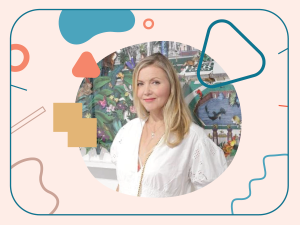
May 17, 2023
Kristjana Williams is a London-based Icelandic artist with dyslexia. She wasn’t diagnosed until she was 25, and now she has her own studio.

May 3, 2023
Aideé Chávez Frescas has ADHD, and is a senior social media manager at Understood. Her posts help end stigma and show others they’re not alone.
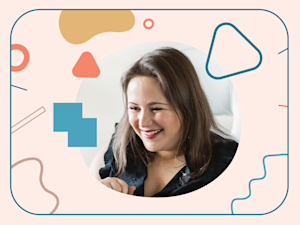
April 19, 2023
Alex Gilbert is a career coach with ADHD and dyslexia. After working in leadership development for years, she started her own coaching business.
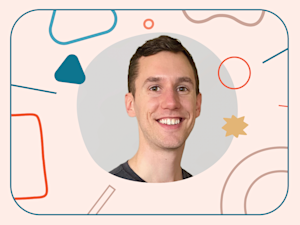
April 5, 2023
Dan Reis was diagnosed with ADHD during the pandemic. Now, he’s made it his mission to explore coping strategies to help him get his work done.

March 22, 2023
Rachel Basoco’s two jobs keep things interesting for her ADHD. She works full time at Fidelity, and part time at 11:11 Media, Paris Hilton’s company.
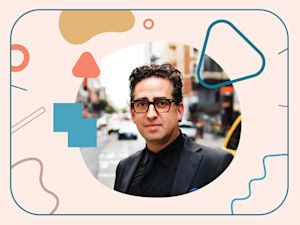
March 8, 2023
Gil Gershoni says that everything he does is dyslexic. He founded the branding firm Gershoni Creative and hosts the Dyslexic Design Thinking podcast.
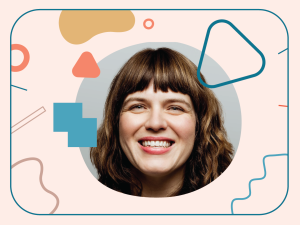
February 22, 2023
Claire Odom is a psychotherapist with ADHD. She’s also a disability inclusion consultant who has advice on navigating the workplace.
